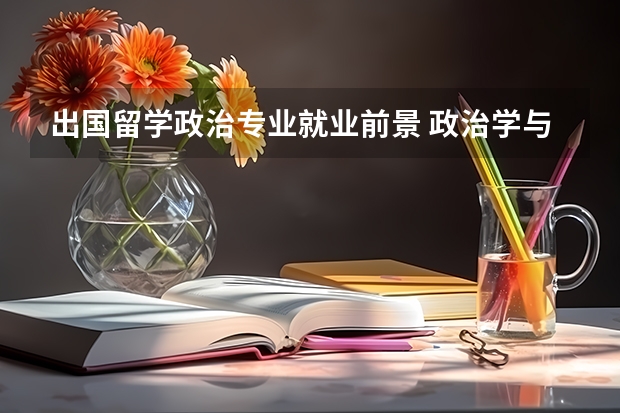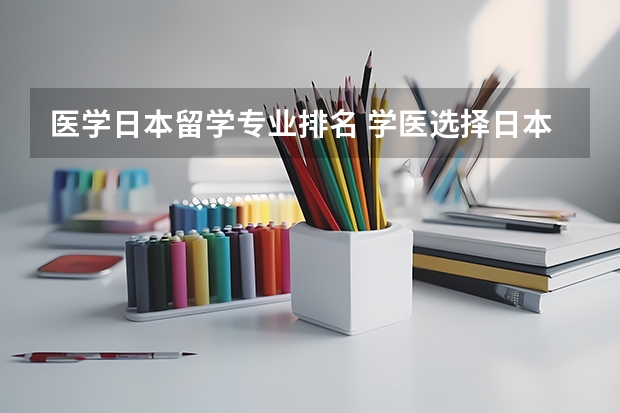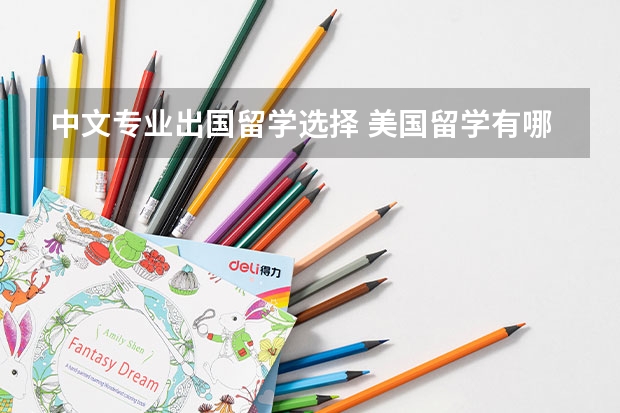撰写美国留学文书应注意什么问题
2024-03-23 22:09:13 | 留学建涯
本文目录一览:

美国研究生留学PS范文及写作要求
很多学生会选择去美国读研究生,呢么美国研究生留学PS的写作技巧及要求有哪些呢?这是很多学生比较感兴趣的问题。和一起来看看吧!下面是我整理的相关资讯,欢迎阅读。
美国研究生留学PS个人陈述写作时,很多人往往把思路和想法局限在自己的世界中,从而忽略了阅读个人陈述的招生者的心思,比如招生者如果阅读了自己的个人陈述是什么样的感受和反馈。如果在个人陈述写作中能够去揣摩一下招生者的心思就可以更好地准备自己的申请,使自己的申请更加完美并获得最佳的申请结果。
1、在个人陈述的整体布局上
很多学生的个人陈述写作是非常失败的,他们的思路是典型的中国思维,在文书写作上往往是大而全,希望在申请文书中体现自身所有的内容。故此,无论是小时候的把一分钱交给警察叔叔的经历,还是大学抗洪救灾,都会一股脑的往上放,这使得文章整体的布局出现严重的思路不突出,内容不鲜明的特点。其实,申请人为什么不“换位思考”,看看录取委员会想要什么呢?如果自己是录取委员会的一员,期待着学生的文书是什么样子?到底是一个宽泛的自述,还是针对专业的一个有针对性的个人表达?其实,个人陈述就是一个围绕专业的表达,录取委员会感兴趣的就是和专业有关的内容,至于其他的内容并不是他们所关心的。一个学习计算机的学生,他的计算能力和编程经验,录取委员会会非常感兴趣,至于他参加抗洪救灾没有,除非是他参与了抗洪救灾的计算机程序设计,录取委员就不会太感冒了。故此,个人陈述的整体布局要以录取委员会的喜好作为基础,录取委员会希望看什么,就写什么,如果没有兴趣的,就不要花任何力气去写了。这一点来说非常重要。
2、在个人陈述的写作风格上 留学建涯
很多申请人在写个人陈述写作的过程中,希望“语不惊人死不休”,力求将申请文书写的完美,这一点本身没错,一篇优美的个人陈述,是能够给自己申请结果加上很多分数的。不过,英语有一句话叫做“Substance over form”,意思是内容重于形式,在阅读申请材料过程中,录取委员会其实也更注重申请人的实质性东西,希望看到申请人的专业水平和研究工作经历。而很多申请人却将大量的精力放到了如何使语言更优美的方向上去,用的单词生僻,读起来不能朗朗上口,这实际上是本末倒置,无法得到录取委员会的青睐。
3、在个人陈述的写作内容上
由于没有“换位思考”的意识,申请人在个人陈述写作内容上的把握往往和录取委员会的期待值离的甚远,这主要体现在申请人对个人陈述写作内容如何表达上。中国申请人对自己的工作经历往往会进行着力描述,但是很少体现自己的思维、学习和提高过程。而录取委员会一方面注重前者,一方面对于申请人的思维过程和自身提高上极其看重。他们看个人陈述,往往会采取一种逻辑的角度,即申请人的成长和进步过程前后有没有逻辑性,前面做的工作是否为后面的情况进行了铺垫,而后面的成就是否是前面工作的深化和提高。这些逻辑性是很多中国学生不具备的。有些同学做的事情很多,但是都是在文章中进行详细的列举,没有把这些重要的内容以逻辑的角度串成一条线,展示给录取委员会。这和录取委员会的思路就相距甚远,极大影响了自己文章在他们心目中的质量和水平。
美国研究生留学PS范文
Personal Statement
A recent piece of news coming out of America caught my attention: Condoleezza Rice, the former US Secretary of State, became one of the first female members to be admitted to the Augusta National Golf Club. The Augusta National Golf Club is the home of the Masters tournament which had, until about a month ago, excluded women throughout its 80-year history. I have read about Rice’s background and her accomplishments in so many areas ranging from sports to music to academics, not to mention politics and international affairs. She has proven again and again the Russian proverb “women can do everything; men can do the rest” and the Chinese saying “women can hold up half of the sky.”
I cannot picture myself playing golf, nor do I intend to, because, while I like sports in general, I am not athletically inclined. However, like Rice, I am not unfamiliar with what historically has been considered to be men’s territory. I am a material forming and control engineering student and my area of interest has been the microcosmic mechanism of steel and other alloy materials, an area in which female students are definitely in the minority. For me, my interest in science, particularly materials science, was natural. My grandfather belonged to the first generation of pilots of the People’s Republic of China. I grew up under his care. The type of stories he shared with me were often a mixture his encounters with Chinese and world leaders he had flown and the mechanical features of the flight deck. My father is not a pilot, but his job requires that he spends most of his work hours in the cockpit of aircrafts as a radio communication maintenance engineer. I have lost count of the number of times I accompanied him to test radio signals or fix radio problems. Under the influence of my grandpa and my father, I developed an early interest in mechanics, electric circuits, physics and chemistry.
It was later in college that I gained a much deeper appreciation of the complicated and almost mysterious inner workings of metal materials. The study of metallography and heat treatment guided me into the microcosmic world. Heat treatment processes such as quenching and tempering can significantly change these properties. I also investigated the mechanical properties of materials, defects and their propagation, as well as their behavior under static, dynamic, and cyclic loads. With the help electron microscope, I observed feather-shaped lower bainite and needle-shaped high bainite. All these phenomena fully demonstrate the amazing nature of this discipline.
During my junior year I did an internship at Rizhao Iron and Steel Works, where I gained practical experience in ingot casting, foundry techniques, blast furnace extraction, and electrolytic extraction. As I learnt the intricacies of removing impurities such as sulfur, phosphorus and excess carbon from raw iron and adding alloying elements such as manganese, nickel, chromium and vanadium to create the desired properties, I constantly drew the analogy between cooking and steelmaking. We make primary, secondary and HIsarna steelmaking processes more interesting in very much the same way we try to spice up our cooking recipes with all kinds of ingredients; certainly we can fine-tune the heating and cooling processes just as we monitor our cooking temperature for the desired result. I thought steelmaking is eminently suited to women. Which is not to it is not suited to men. I am not suggesting or trying to stereotype women as fine cooks in the kitchen; in fact, some of the best cooks I have seen on televised Iron Chef competitions are men. What I am saying is that even Steelmaking is certainly a field that calls for creativity. And, when it comes to creativity, women have much to bring to the table.
I was a member of a project team that studied a new automatic steel-teeming system with an electromagnetic induction coil. The new system uses Fe-C alloy to replace traditional stuffing, and applies the electromagnetic induction to heat the alloy, which realizes the automatic tapping. Consequently, the system increases the pouring rate and improves the purity of molten steel, being meaningful in practice. During the experiment, after looking up relative information and contacting actual manufacturers, I finally found an alloy material which could resist high temperatures and so I applied for a patent. Meanwhile, while dealing with joint parts, our group associated it with real life and took the way fire hydrants link together as our model. At last, we got satisfactory results.
Both the United States and China have made significant strides in providing equal opportunity for women. The differences are not very great in this area. For me, as an aspiring material scientist, the differences lie in the American tradition of excellence and the level of development in materials science research. There, extensive availability and use of sophisticated, state-of-the-art equipment provide students and researchers the tools necessary for high-resolution examination of compositions, structures and the defects of materials. I am naturally drawn to intellectually challenging environments where the worlds’ best and brightest men and women congregate to compare notes, to explore and drive the creation of new products and even new industries and to lead in the advancement of science and technology.
With influential faculty and abundant resources, Carnegie Mellon University is my top choice. I am specifically interested in the realm of microstructural science. The goal of this program is to understand the origins of the quantifiable characteristics of polycrystals and soft materials that arise during processes, to develop strategies for influencing these characteristics, and to define microstructural metrics that can be directly related to macroscopic properties and performance. I hope I have the opportunity to work together with your eminent faculty. I believe that my dream to devote myself to the study of materials can be realized with the help of your graduate training program.

撰写美国留学文书应注意什么问题
美国留学文书的三座大山:PS、RL、CV。
PS:重点是个人,是要让招生官看到你个人特点,亮点的材料,一封好的PS能把你活灵活现的展示在招生官面前。写作内容主要包括经济情况、家庭情况、受教育情况、你将要拥有的机会,你曾经面对的挑战等等。
RL:国外招生官通过对申请者非常了解的教授或老师以第三方角度对你进行评价,从侧面去了解你,去证明你的优秀。
CV:是一个人经历的完整总结,里面包括姓名联系方式、学习和调研成果、教育背景、社会实践经历、个人技能、工作经历、奖项荣誉及其他能力爱好等,是一分很全面的简历。
另外还有SOP,Essay,Resume
SOP:更侧重申请者专业领域的东西,比如:1.你为什么选择这个专业?2.你在这个专业上有哪些经历?3.你从这些经历中获得了什么?4.你将来的规划是什么?
当一个学校同时要求提交PS和SOP的时候,说明SP和SOP的定义被严格区分了,大家按照上面的定义去写。而且这个时候学校的官网上也会详细地要求各自的内容;
另外一种情况,就是大家申请研究生留学的时候,有的学校是单独要PS,有的学校是单独要SOP。这个时候,PS其实就等同于SOP。
Essay:学术论文,在文科研究生申请中常见,理工科申请中有时也遇到。对于大多数文科申请人而言,写作范例是重中之重,可以直接反映出申请人做研究和写论文的能力,对于理工科申请人而言,能够将模型、理论用简介清晰的语言阐释清楚能说明申请者的综合素质。
Resume:展示自己亮点的材料,是一份需要根据申请者要申请的专业和学校来针对写的材料。
很有幸ivybridgedu留学平台的常驻导师Bob Wang能为你讲解你问题的核心:写美国留学文书应该注意什么,我们分三部分来讲。
PS:
-
一篇PS的正常长度为1000-1200英文单词。太短的话不能详细展现个人经历和能力,太长又会导致招生官没有读下去的欲望,如果学校限制了字数,就按照学校的要求来写;
-
写作内容最好包含的内容有:
1、你为什么选择这个专业,这所学校。
2、你为什么符合这个专业的招生要求以及契合度。
3、做过哪些课外活动,从中获得了什么收获以及对你未来学习有什么帮助。
4、谈你从小到大遇到过的对你学习生活最有启示和帮助的人或事。
5、你未来的计划和就业方向。
6、证明你是一个专注,有趣的人。
RL:
-
找了解你的教授,最好跟你申请的专业有一定相关性的人;
-
一般500字左右,一页以内;
-
推荐信中应该讲清楚以下内容:
1、推荐人与申请者之间的关系
2、认识时长
3、对申请者的印象
CV:
-
尽量简洁,用短语或短句,不用长句;
-
通常在2页以内;
-
尽量在第一、二段突出自己的个性化;
-
这些内容最好包括:基本信息、教育背景、标准化考试成绩、奖学金或其他获奖情况、课外活动、实习经历、学术经历等。
希望以上内容能帮助到你

出国留学申请的文书(PS, CV, WS等)怎么写?
PS就是个人陈述或说明,要说出你到底喜不喜欢这个专业、喜欢到什么程度、对未来有什么设想,去读研究生、博士一定要谈对这一领域的看法,说出自己对它的热爱。要注意的有:
1、PS的长度要适中,600到800英文单词。
2、紧扣专业,主线明确,避免盲目个性化。让招生委员会知道你选择该专业的明确和强烈的动机,同时具备充分的条件完成该专业的学习。
3、结构简单,衔接紧密,主线明确,便于理解。谨记:simpleisthebest。
4、精心安排PS和其它文件的关系。PS,推荐信,简历等文件构成一整套申请文书,既需要相互应证,也需要这些文件各有侧重点。
5、语言表达上,英语要地道、符合英语的思维习惯和文风,避免“中式英语。
推荐信在申请材料中也是很重要的,是从熟悉申请者的第三者的角度对于申请者进行评论。对于研究类课程的申请,尤其是PhD的申请,三封推荐信中应该至少有两封学术推荐,即要有两个教授或老师推荐,推荐内容主要在你的学术能力和研究能力,并顾及课外活动和社会活动。选择推荐人时要遵循熟悉、专业两大原则。
个人简历一般要简明扼要,如果有很多的工作背景或研究背景的话,建议不要超过2页。一般包括以下内容:个人信息:姓名,性别,出生日期和地点,邮寄地址,联系E-MAIL,电话。
目标:哪所大学,什么专业及学位,个人目标是什么。
教育背景:就读时间,学校名称,专业,学历学位,GPA,排名;工作实习:简要介绍工作实习时间,单位,具体工作或实习内容;所获得的奖项;英语及综合能力。 以上就是留学建涯小编给大家带来的撰写美国留学文书应注意什么问题全部内容,希望对大家有所帮助!
-
 出国留学政治专业就业前景 政治学与行政学专业就业前景
出国留学政治专业就业前景 政治学与行政学专业就业前景2024-02-14 06:27:32
-
 医学日本留学专业排名 学医选择日本留学好不好?有什么专业推荐?
医学日本留学专业排名 学医选择日本留学好不好?有什么专业推荐?2023-09-07 05:27:56
-
 金融学专业好不好 金融类专业出国读研哪一个国家较好?
金融学专业好不好 金融类专业出国读研哪一个国家较好?2024-02-06 13:24:01
-
 硕士生出国留学就读什么专业好呢
硕士生出国留学就读什么专业好呢2023-12-16 20:53:54
-
 出国留学专业选择金融 韩国留学金融选专业详细介绍
出国留学专业选择金融 韩国留学金融选专业详细介绍2023-10-16 13:34:04
-
 中文专业出国留学选择 美国留学有哪些专业适合对外汉语专业学生?
中文专业出国留学选择 美国留学有哪些专业适合对外汉语专业学生?2023-10-15 10:16:19